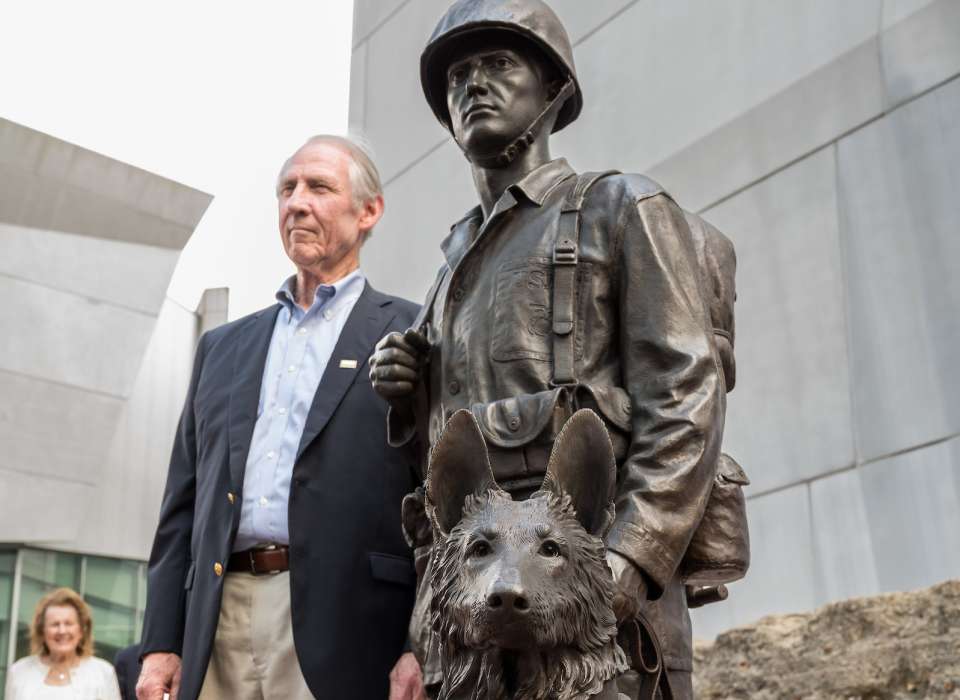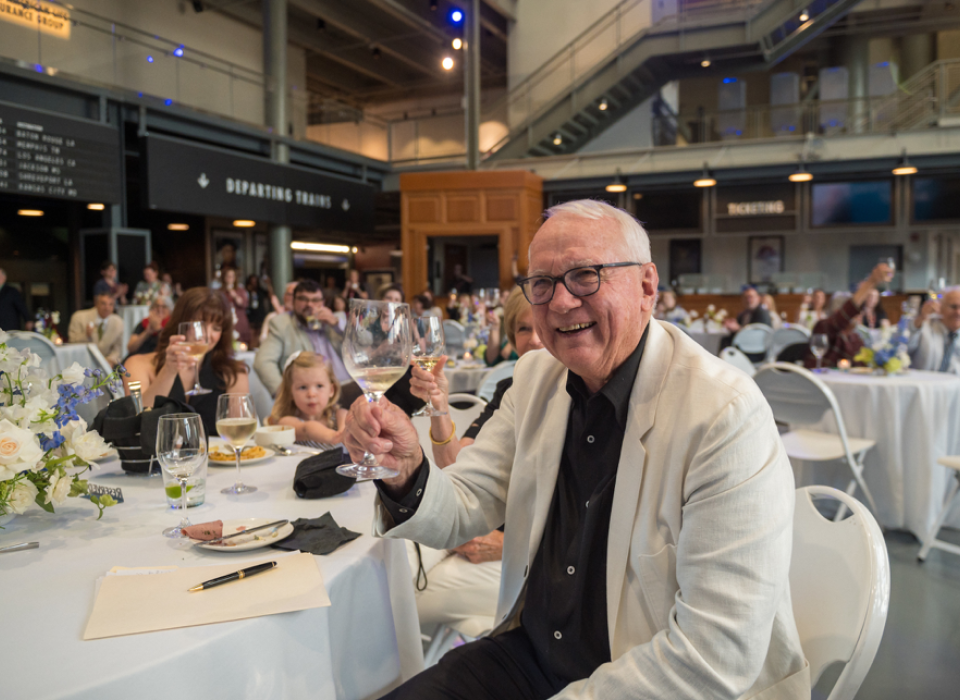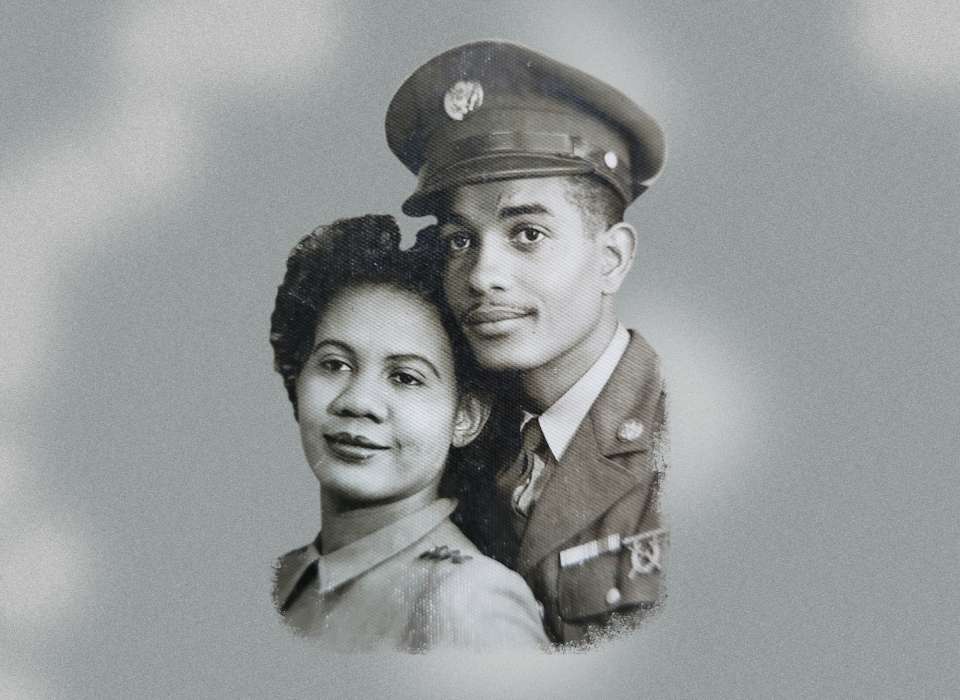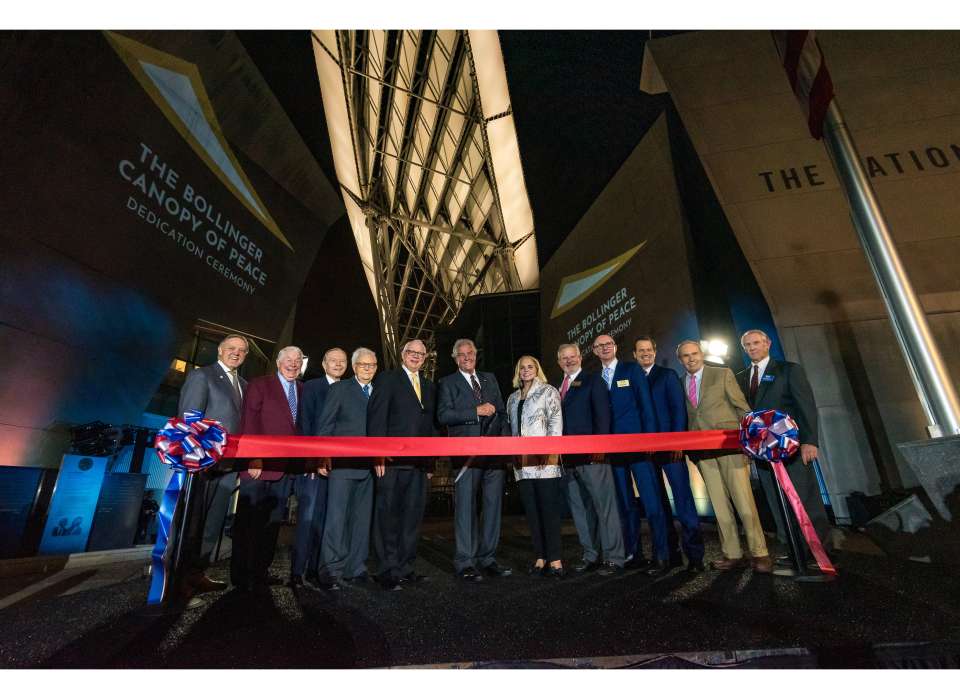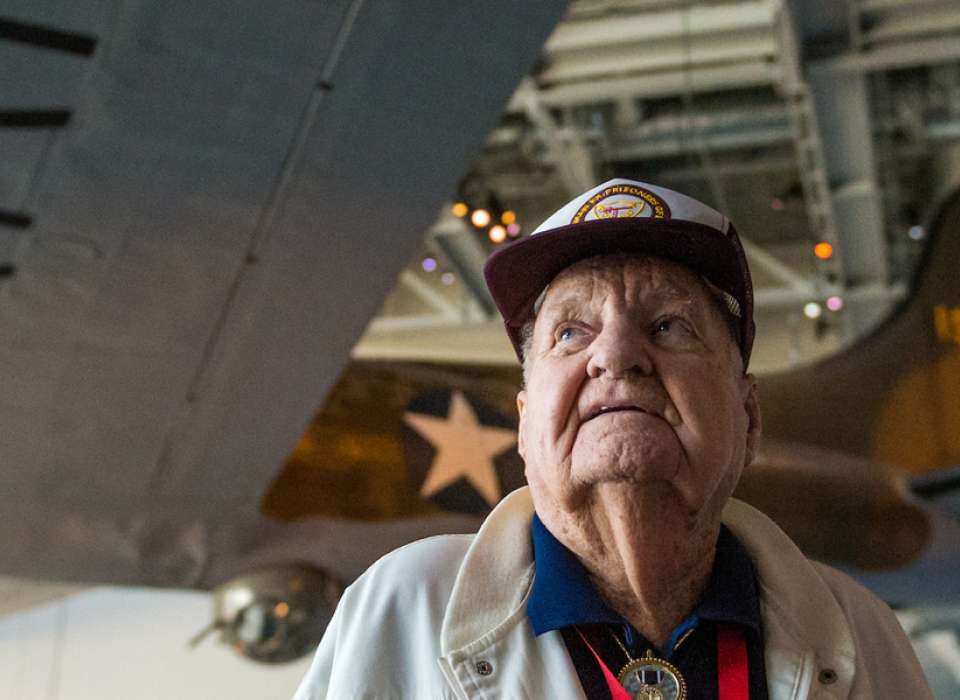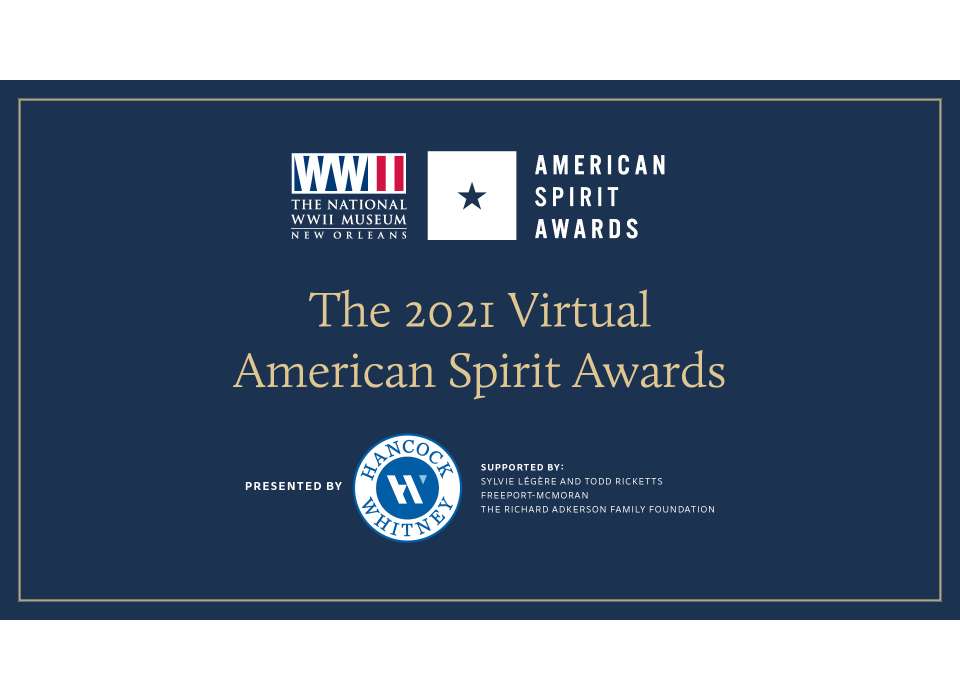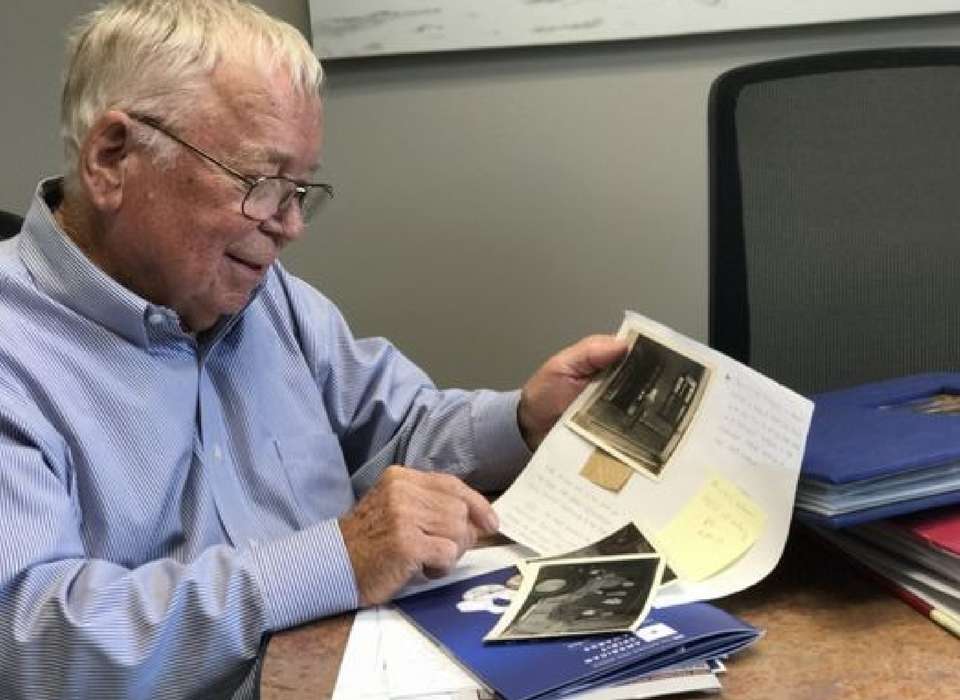Expressions of America is a wonderful example of the numerous creative ways in which to showcase the Museum’s collection. In a traditional exhibition, artifacts might be mounted in cases or framed on walls. Expressions of America—a first-of-its-kind nighttime sound and light experience premiering at The National WWII Museum on Veterans Day weekend—moves the exhibition outside, offering a larger-than-life canvas, projecting the story directly onto the exterior of the Museum’s buildings.
The narrative for the multimedia show is drawn directly from wartime personal correspondence and personal accounts. Although we could use only a tiny fraction of the Museum’s holdings in the show’s script, each voice speaks for a million others. The sentiments expressed offer unique viewpoints on universal experiences. Research for the scripting began in 2018 with an extensive search into the Museum’s archive of correspondence and oral histories. The Museum preserves many thousands of wartime letters from a wide range of individuals all over the world. These letters present diverse portraits of American life from a time when the outcome of the war and the future of the world was uncertain.
Although the script for Expressions of America was drawn predominantly from the Museum’s collection, for one segment in particular—“Expressions of Hope,” centered on the contributions of Bob Hope—research extended beyond the Museum’s archives. At the Library of Congress, we looked through boxes of correspondence sent to Hope from servicemen and women and their families. One of the most striking things was how familiar the letters were; people wrote to Hope, a celebrity, as they would a family friend, asking for comfort and desperate for news of a loved one whom Hope had seen while touring the war zones to entertain. Many letters addressed “Dear Bob” or “Dear Mr. Hope” express thanks for bringing laughter and a piece of home to those in service, like Esther Wolfson, who wrote to Hope in 1943, “Thank you for bringing cheer to my husband who is 10,000 miles away from home.”
In working with archival material for inclusion in Expressions of America, one of the most difficult tasks was curation of the letters, selecting those writers whose words would need to speak for others. The show’s writers and directors were tasked with extreme editing, extracting only the very small segments needed for the show from letters that sometimes spanned several pages or from oral histories captured on hours of tape. Parceling out phrases ten words at a time, each expression carries enormous weight. These singular phrases are stitched together to form a patchwork of thoughts, hopes, and fears from a chorus of individuals. The show allows those who experienced the war—those who lived through it and some who did not—to speak for themselves, to talk to us.
I’m honored to have played a part in this project to introduce those featured in the show to new audiences. Rather than abstract figures from the past who led lives much different from ours today, the cast you’ll come to know in Expressions of America were real people with relatable stories. We honor and remember them by speaking life into their words, releasing their thoughts into the world, reanimating their lives, and presenting their stories in a new light.
Kim Guise
Kimberly Guise holds a BA in German and Judaic Studies from the University of Massachusetts Amherst. She also studied at the Universität Freiburg in Germany and holds a masters in Library and Information Science (MLIS) from Louisiana State University. Kim is fluent in German, reads Yiddish, and specializes in the American prisoner-of-war experience in World War II.


